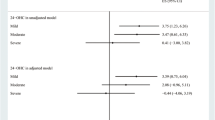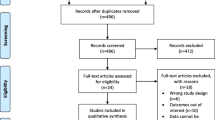Abstract
Vitamin D is a secosteroid hormone that shares a synthetic pathway with cholesterol. ApoE, which is involved in the transport of cholesterol, is the most significant genetic risk factor for sporadic Alzheimer’s disease (AD). Surprisingly, recent studies have indicated the presence of an evolutionary juncture between these two molecules. To demonstrate this possible relationship, we investigated serum levels of 25-hydroxyvitamin-D3 (25OHD) in patients with early onset-AD (EOAD; n:22), late onset-AD (LOAD; n:72), mild cognitive impairment (MCI; n:32) and in healthy subjects (n:70). We then analyzed the correlation between 25OHD and cytokines, BDNF and Hsp90 with respect to ApoE alleles, as these molecules were investigated in our previous studies. The LOAD patients had low levels of 25OHD, but these low levels originated only from ApoEɛ4 non-carrier patients. Negative correlations were observed between serum 25OHD and TNFα, IL-1β or IL-6 levels in healthy subjects or MCI patients, but these same correlations were positive in LOAD patients. ApoE alleles indicated that these positive correlations exist only in ɛ4 carrier LOAD patients. Consequently, our results indicate that vitamin D deficiency presents a greater risk for ApoEɛ4 non-carrier AD patients than for ɛ4 carriers. Therefore, it might be beneficial to monitor the vitamin D status of ApoEɛ4 allele non-carrier AD patients.


Similar content being viewed by others
References
Huang Y, Mahley RW (2014) Apolipoprotein E: structure and function in lipid metabolism, neurobiology, and Alzheimer’s diseases. Neurobiol Dis 72(Pt A):3–12. doi:10.1016/j.nbd.2014.08.025
Kim J, Yoon H, Basak J, Kim J (2014) Apolipoprotein E in synaptic plasticity and Alzheimer’s disease: potential cellular and molecular mechanisms. Mol Cells 37(11):767–776. doi:10.14348/molcells.2014.0248
Gerdes LU (2003) The common polymorphism of apolipoprotein E: geographical aspects and new pathophysiological relations. Clin Chem Lab Med 41(5):628–631. doi:10.1515/CCLM.2003.094
Huebbe P, Nebel A, Siegert S, Moehring J, Boesch-Saadatmandi C, Most E, Pallauf J, Egert S, Muller MJ, Schreiber S, Nothlings U, Rimbach G (2011) APOE epsilon4 is associated with higher vitamin D levels in targeted replacement mice and humans. FASEB J 25(9):3262–3270. doi:10.1096/fj.11-180935
Haddad JG, Matsuoka LY, Hollis BW, Hu YZ, Wortsman J (1993) Human plasma transport of vitamin D after its endogenous synthesis. J Clin Invest 91(6):2552–2555. doi:10.1172/JCI116492
Giudetti AM, Romano A, Lavecchia AM, Gaetani S (2016) The role of brain cholesterol and its oxidized products in Alzheimer’s disease. Curr Alzheimer Res 13(2):198–205
Petersen RC (2004) Mild cognitive impairment as a diagnostic entity. J Intern Med 256(3):183–194. doi:10.1111/j.1365-2796.2004.01388.x
Alaylioglu M, Gezen-Ak D, Dursun E, Bilgic B, Hanagasi H, Ertan T, Gurvit H, Emre M, Eker E, Uysal O, Yilmazer S (2016) The association between clusterin and APOE polymorphisms and late-onset Alzheimer disease in a Turkish cohort. J Geriatr Psychiatry Neurol. doi:10.1177/0891988716640373
Dursun E, Gezen-Ak D, Hanagasi H, Bilgic B, Lohmann E, Ertan S, Atasoy IL, Alaylioglu M, Araz OS, Onal B, Gunduz A, Apaydin H, Kiziltan G, Ulutin T, Gurvit H, Yilmazer S (2015) The interleukin 1 alpha, interleukin 1 beta, interleukin 6 and alpha-2-macroglobulin serum levels in patients with early or late onset Alzheimer’s disease, mild cognitive impairment or Parkinson’s disease. J Neuroimmunol 283:50–57. doi:10.1016/j.jneuroim.2015.04.014
Gezen-Ak D, Dursun E, Hanagasi H, Bilgic B, Lohman E, Araz OS, Atasoy IL, Alaylioglu M, Onal B, Gurvit H, Yilmazer S (2013) BDNF, TNFalpha, HSP90, CFH, and IL-10 serum levels in patients with early or late onset Alzheimer’s disease or mild cognitive impairment. J Alzheimers Dis 37(1):185–195. doi:10.3233/JAD-130497
Sachs MC, Shoben A, Levin GP, Robinson-Cohen C, Hoofnagle AN, Swords-Jenny N, Ix JH, Budoff M, Lutsey PL, Siscovick DS, Kestenbaum B, de Boer IH (2013) Estimating mean annual 25-hydroxyvitamin D concentrations from single measurements: the multi-ethnic study of atherosclerosis. Am J Clin Nutr 97(6):1243–1251. doi:10.3945/ajcn.112.054502
Cherniack EP, Florez H, Roos BA, Troen BR, Levis S (2008) Hypovitaminosis D in the elderly: from bone to brain. J Nutr Health Aging 12(6):366–373
Evatt ML, DeLong MR, Khazai N, Rosen A, Triche S, Tangpricha V (2008) Prevalence of vitamin D Insufficiency in patients with Parkinson Disease and Alzheimer Disease. Arch Neurol 65(10):1348–1352
Llewellyn DJ, Lang IA, Langa KM, Muniz-Terrera G, Phillips CL, Cherubini A, Ferrucci L, Melzer D (2010) Vitamin D and risk of cognitive decline in elderly persons. Arch Intern Med 170(13):1135–1141
Annweiler C, Dursun E, Feron F, Gezen-Ak D, Kalueff AV, Littlejohns T, Llewellyn DJ, Millet P, Scott T, Tucker KL, Yilmazer S, Beauchet O (2015) ‘Vitamin D and cognition in older adults’: updated international recommendations. J Intern Med 277(1):45–57. doi:10.1111/joim.12279
van der Meer IM, Middelkoop BJ, Boeke AJ, Lips P (2011) Prevalence of vitamin D deficiency among Turkish, Moroccan, Indian and sub-Sahara African populations in Europe and their countries of origin: an overview. Osteoporos Int 22(4):1009–1021. doi:10.1007/s00198-010-1279-1
Hekimsoy Z, Dinc G, Kafesciler S, Onur E, Guvenc Y, Pala T, Guclu F, Ozmen B (2010) Vitamin D status among adults in the Aegean region of Turkey. BMC Public Health 10:782. doi:10.1186/1471-2458-10-782
Gezen-Ak D, Alaylioglu M, Genc G, Gunduz A, Candas E, Bilgic B, Atasoy IL, Apaydin H, Kiziltan G, Gurvit H, Hanagasi H, Ertan S, Yilmazer S, Dursun E (2016) GC and VDR SNPs and Vitamin D levels in Parkinson’s disease: the relevance to clinical features. Neuromol Med. doi:10.1007/s12017-016-8415-9
Meamar R, Shaabani P, Tabibian SR, Aghaye Ghazvini MR, Feizi A (2015) The effects of uric Acid, serum vitamin d3, and their interaction on Parkinson’s disease severity. Parkinsons Dis 2015:463483. doi:10.1155/2015/463483
Maddock J, Cavadino A, Power C, Hypponen E (2015) 25-hydroxyvitamin D, APOE varepsilon4 genotype and cognitive function: findings from the 1958 British birth cohort. Eur J Clin Nutr 69(4):505–508. doi:10.1038/ejcn.2014.201
Egert S, Rimbach G, Huebbe P (2012) ApoE genotype: from geographic distribution to function and responsiveness to dietary factors. Proc Nutr Soc 71(3):410–424. doi:10.1017/S0029665112000249
Ding Y, Liao W, Yi Z, Xiang W, He X (2015) Cardioprotective role of vitamin D receptor in circulating endothelial cells of ApoE-deficient mice. Int J Clin Exp Med 8(4):5065–5074
Zhang J, Liu Q (2015) Cholesterol metabolism and homeostasis in the brain. Protein Cell 6(4):254–264. doi:10.1007/s13238-014-0131-3
Glossmann HH (2010) Origin of 7-dehydrocholesterol (provitamin D) in the skin. J Invest Dermatol 130(8):2139–2141. doi:10.1038/jid.2010.118
Bogh MK, Schmedes AV, Philipsen PA, Thieden E, Wulf HC (2010) Vitamin D production after UVB exposure depends on baseline vitamin D and total cholesterol but not on skin pigmentation. J Invest Dermatol 130(2):546–553. doi:10.1038/jid.2009.323
Carbone LD, Rosenberg EW, Tolley EA, Holick MF, Hughes TA, Watsky MA, Barrow KD, Chen TC, Wilkin NK, Bhattacharya SK, Dowdy JC, Sayre RM, Weber KT (2008) 25-Hydroxyvitamin D, cholesterol, and ultraviolet irradiation. Metabolism 57(6):741–748. doi:10.1016/j.metabol.2008.01.011
Pardridge WM, Sakiyama R, Coty WA (1985) Restricted transport of vitamin D and A derivatives through the rat blood-brain barrier. J Neurochem 44(4):1138–1141
Gascon-Barre M, Huet PM (1983) Apparent [3H]1,25-dihydroxyvitamin D3 uptake by canine and rodent brain. Am J Physiol 244(3):E266–E271
Bjorkhem I, Meaney S (2004) Brain cholesterol: long secret life behind a barrier. Arterioscler Thromb Vasc Biol 24(5):806–815. doi:10.1161/01.ATV.0000120374.59826.1b
Gale SC, Gao L, Mikacenic C, Coyle SM, Rafaels N, Murray Dudenkov T, Madenspacher JH, Draper DW, Ge W, Aloor JJ, Azzam KM, Lai L, Blackshear PJ, Calvano SE, Barnes KC, Lowry SF, Corbett S, Wurfel MM, Fessler MB (2014) APOepsilon4 is associated with enhanced in vivo innate immune responses in human subjects. J Allergy Clin Immunol 134(1):127–134. doi:10.1016/j.jaci.2014.01.032
Calton EK, Keane KN, Newsholme P, Soares MJ (2015) The impact of vitamin D levels on inflammatory status: a systematic review of immune cell studies. PLoS One 10(11):e0141770. doi:10.1371/journal.pone.0141770
Braesch-Andersen S, Paulie S, Smedman C, Mia S, Kumagai-Braesch M (2013) ApoE production in human monocytes and its regulation by inflammatory cytokines. PLoS One 8(11):e79908. doi:10.1371/journal.pone.0079908
Neme A, Nurminen V, Seuter S, Carlberg C (2015) The vitamin D-dependent transcriptome of human monocytes. J Steroid Biochem Mol Biol. doi:10.1016/j.jsbmb.2015.10.018
Baitsch D, Bock HH, Engel T, Telgmann R, Muller-Tidow C, Varga G, Bot M, Herz J, Robenek H, von Eckardstein A, Nofer JR (2011) Apolipoprotein E induces antiinflammatory phenotype in macrophages. Arterioscler Thromb Vasc Biol 31(5):1160–1168. doi:10.1161/ATVBAHA.111.222745
Mizwicki MT, Liu G, Fiala M, Magpantay L, Sayre J, Siani A, Mahanian M, Weitzman R, Hayden EY, Rosenthal MJ, Nemere I, Ringman J, Teplow DB (2013) 1alpha,25-dihydroxyvitamin D3 and resolvin D1 retune the balance between amyloid-beta phagocytosis and inflammation in Alzheimer’s disease patients. J Alzheimers Dis 34(1):155–170. doi:10.3233/JAD-121735
Zhang H, Wu LM, Wu J (2011) Cross-talk between apolipoprotein E and cytokines. Mediators Inflamm 2011:949072. doi:10.1155/2011/949072
Galloway S, Takechi R, Pallebage-Gamarallage MM, Dhaliwal SS, Mamo JC (2009) Amyloid-beta colocalizes with apolipoprotein B in absorptive cells of the small intestine. Lipids Health Dis 8:46. doi:10.1186/1476-511X-8-46
Gezen-Ak D, Yilmazer S, Dursun E (2014) Why vitamin D in Alzheimer’s disease? The hypothesis. J Alzheimers Dis 40(2):257–269. doi:10.3233/JAD-131970
Dursun E, Gezen-Ak D, Yilmazer S (2013) A new mechanism for amyloid-beta induction of iNOS: vitamin D-VDR pathway disruption. J Alzheimers Dis 36(3):459–474. doi:10.3233/JAD-130416
Gezen-Ak D, Dursun E, Yilmazer S (2011) The effects of vitamin D receptor silencing on the expression of LVSCC-A1C and LVSCC-A1D and the release of NGF in cortical neurons. PLoS One 6(3):e17553. doi:10.1371/journal.pone.0017553
Acknowledgments
Study funded by the Research Fund of Istanbul University (ONAP-28651, ONAP-4024, ONAP-21712).
Author information
Authors and Affiliations
Corresponding author
Ethics declarations
Conflict of interest
The authors declare that they no conflict of interest.
Ethical approval
All procedures performed in studies involving human participants were in accordance with the ethical standards of the institutional and/or national research committee and with the 1964 Helsinki declaration and its later amendments or comparable ethical standards. In addition, the study was approved by the Ethics Committee of Istanbul University. Signed informed consent was obtained from all study participants.
Rights and permissions
About this article
Cite this article
Dursun, E., Alaylıoğlu, M., Bilgiç, B. et al. Vitamin D deficiency might pose a greater risk for ApoEɛ4 non-carrier Alzheimer’s disease patients. Neurol Sci 37, 1633–1643 (2016). https://doi.org/10.1007/s10072-016-2647-1
Received:
Accepted:
Published:
Issue Date:
DOI: https://doi.org/10.1007/s10072-016-2647-1




